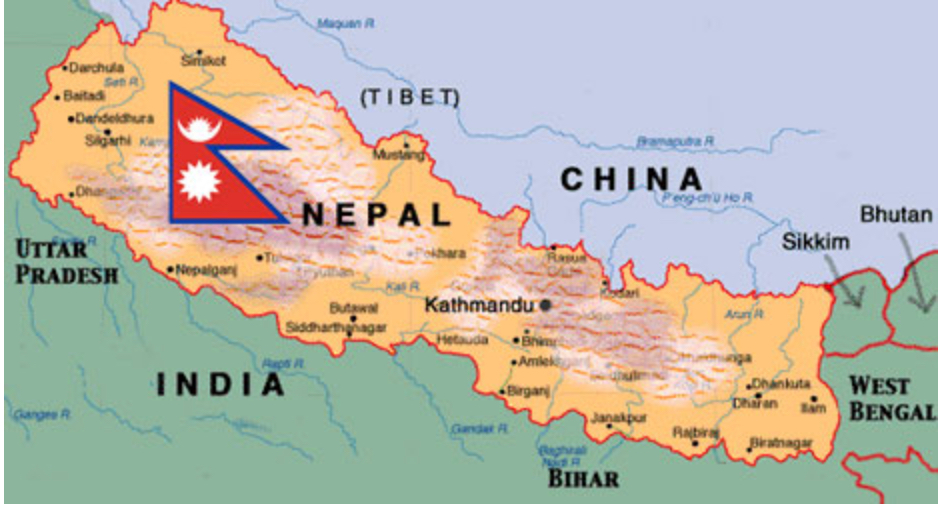
The United States does not currently have any official military bases in Nepal. Nepal has historically maintained a policy of non-alignment and has not allowed foreign military bases on its soil. However, there have been discussions, controversies, and concerns regarding potential U.S. military or strategic interests in Nepal, particularly under initiatives like the Millennium Challenge Corporation (MCC) Compact and the State Partnership Program (SPP) with the U.S. National Guard.

Key Points of Analysis:
1. No Formal U.S. Military Base, but Strategic Engagements Exist
- Nepal has not permitted any foreign military bases, adhering to its non-aligned and neutral foreign policy.
- However, the U.S. has engaged with Nepal through:
- Millennium Challenge Corporation (MCC): A $500 million grant for infrastructure (electricity & roads), which some Nepalese critics feared could have hidden military clauses (despite U.S. denials).
- State Partnership Program (SPP): A cooperation program between the Nepal Army and the U.S. National Guard, which raised concerns about potential militarization.
2. Geopolitical Concerns (U.S. vs. China & India)
- Nepal is strategically located between China and India, both of which are sensitive to U.S. influence in the region.
- China’s Perspective: Suspects U.S. intentions, fearing Nepal could become a partner in U.S. Indo-Pacific Strategy (seen as anti-China).
- India’s Perspective: Traditionally holds influence over Nepal’s security affairs but has also been cautious about U.S. military outreach.
3. Domestic Opposition in Nepal
- Political parties (mainly left-wing and nationalist factions) have opposed U.S. initiatives like MCC and SPP, calling them threats to sovereignty.
- Protests erupted in 2022 over fears that MCC could lead to a de facto U.S. military presence (though the U.S. clarified it was purely developmental).
4. U.S. Interests in Nepal
- Countering China: The U.S. sees Nepal as part of its broader Indo-Pacific strategy to limit Chinese influence.
- Disaster Response & Military Training: The U.S. has provided aid (e.g., post-2015 earthquake) and conducts joint exercises (e.g., “Pacific Defender”).
- Intelligence & Surveillance: Some analysts speculate that Nepal could be useful for monitoring Tibet and Chinese movements.

5. Nepal, a landlocked country situated between China and India, has historically maintained a policy of non-alignment and balanced diplomacy to avoid entanglement in regional power struggles. However, due to its strategic location, there have been occasional discussions and concerns about the possibility of foreign military bases in Nepal.
6. Legal and Constitutional Provisions
- Article 51 (g) of Nepal’s Constitution (2015) mandates that the country pursue a non-aligned foreign policy and prohibits any act that may undermine its sovereignty, territorial integrity, or independence.
- Nepal-India Peace and Friendship Treaty (1950) has provisions that require Nepal to consult India on defense matters, but Nepal has sought revisions to ensure full sovereignty.
- Nepal’s Foreign Policy emphasizes “Zone of Peace” (declared in 1975) and opposes hosting foreign military bases.
7. Geopolitical Interests of Major Powers
- China’s Interest:
- Nepal is part of China’s Belt and Road Initiative (BRI).
- Strategic concern over Tibet’s stability (Nepal hosts Tibetan refugees).
- No official military base, but increasing security cooperation (e.g., training, arms supply).
- India’s Interest:
- 1950 Treaty gives India influence over Nepal’s defense.
- Strong military ties (Nepalese soldiers serve in the Indian Army under the Gurkha agreement).
- India opposes any third-country military presence in Nepal.
- US Interest:
- Millennium Challenge Corporation (MCC) sparked controversy over perceived military strings (though officially a development project).
- No base, but security assistance exists (e.g., training, counter-terrorism cooperation).
8. Risks and Challenges for Nepal
- Sovereignty Concerns: Hosting a foreign base would undermine Nepal’s neutrality.
- Regional Backlash: India and China would oppose each other’s military presence, leading to geopolitical pressure.
- Internal Opposition: Political parties and civil society strongly oppose foreign military involvement.
9. Current Status: No Foreign Bases, But Growing Security Ties
- No foreign military base exists in Nepal officially.
- However, Nepal engages in military training exchanges with the US, India, and China.
- 2017 Nepal-China Military Drill raised concerns in India.
- 2022 MCC Debate led to fears of indirect US military influence.
10. Conclusion
Nepal’s strategic neutrality remains crucial for its sovereignty. While major powers seek influence, Nepal has resisted direct military basing to avoid becoming a battleground for India-China rivalry. However, growing security cooperation with external powers requires careful diplomacy to prevent unintended escalations.
Recommendations for Nepal:
- Strengthen Non-Aligned Policy: Avoid any military alliances.
- Transparency in Security Deals: Ensure defense agreements are not misconstrued as basing arrangements.
- Balanced Engagement: Maintain military cooperation with multiple partners without compromising neutrality.
While no U.S. military base exists in Nepal, American strategic engagement has increased, causing geopolitical tensions. Nepal’s government walks a fine line between maintaining sovereignty, securing developmental aid, and balancing relations with China, India, and the U.S. Future developments will depend on Nepal’s ability to resist external pressure while leveraging partnerships for economic growth.






